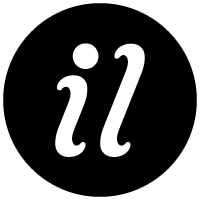Logo Optional: How Major Brands Are Proving They’re More Than Just a Symbol 🚫
In out-of-home (OOH) advertising, constraint is everything. A mere two-second glance. A single focal point. Limited copy. These restrictions, long viewed as creative handcuffs, are being brilliantly subverted by major brands who are adding another self-imposed challenge: deliberately obscuring their logos to engage viewers more deeply. While creatives worldwide still field the inevitable "can you make the logo bigger?" request, some brands have blown right past this into removing it entirely.
British Airways' "Windows" campaign masterfully demonstrates this approach. Their posters capture staff and passengers gazing out of aircraft windows, their expressions conveying the wonder of flight. Though an explicit BA logo is notably absent, the airline's distinctive aesthetic makes the brand unmistakeable. Tesco has embraced similar thinking with their "ICONS" campaign, transforming the letters T, E, S, C, and O into quality products, while retaining recognisable elements like their blue chevrons and 'Every little helps' tagline.
This strategy succeeds because these brands have become something far more meaningful than a logo in the corner. They possess distinctive assets – visual elements so deeply embedded in consumer consciousness that they transcend the need to be explicit. However, this approach remains a privilege of brands with rich heritage and who have worked hard to build and maintain visual consistency over decades.
While the traditional "4 Ps" of poster advertising – product, price, place, promotion – have long guided outdoor campaigns, a new framework is emerging. Andrew Tindall's modern interpretation suggests four different Ps: Play with assets, culture, copy, and rules. This fresh perspective encourages brands to treat constraints not as restrictions but as creative springboards, crafting memorable communications by cleverly subverting expectations.
These logo-less campaigns tap into what psychologists call the Zeigarnik Effect – our tendency to remember unfinished tasks or incomplete patterns. When viewers encounter these ads, their minds actively participate in completing the brand connection, making the message potentially more memorable than if it had been explicitly stated.
While conventional wisdom suggests a formula of large product shots, minimal copy, and prominent branding, these campaigns prove how brands can respect the medium's limitations while transforming them into opportunities for sophistication and intrigue.
True creative freedom doesn't come from abandoning constraints, but from embracing them. In OOH advertising, less isn't just more – it's everything. And sometimes, the most powerful brand statement comes from knowing when to let your logo take a back seat. Though no doubt there's already a three-day workshop being planned somewhere on "The Strategic Implementation of Logo Reduction Dynamics."


